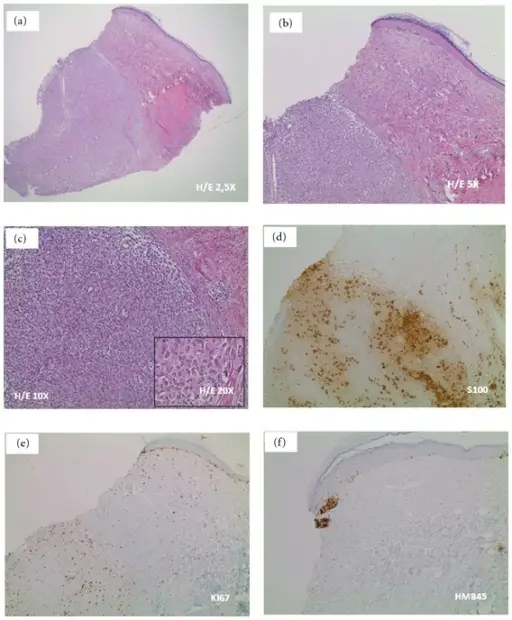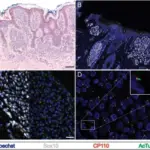Congenital Nevus is a benign neoplasm of the melanocytes which one is born with aka birthmark
What is the Pathology of Congenital Nevus?
The pathology of congenital nevus is: the study of the diseases of the melanocyte that are not cancerous in nature.
-Etiology: The cause of congenital nevus is a genetic mutation.
-Genes involved: NRAS, BRAF genes.
-Pathogenesis: The sequence of events that lead to congenital nevus is as conception is taking place there is the proliferation of the melanocytes which are benign either from the dermis, epidermis, or both. They may be present after birth or can be seen during the 1st 2years of life.
-Morphology: The morphology associated with congenital nevus shows either round or oval with well-marked boundaries and can be smooth. Texture can be rugose, cerebriform of popular.
-Histology: The histology associated with congenital nevus show an extension of naevus cells around nerves, vessels, and adnexa. There is a diffusely infiltrative pattern between collagen.
How does Congenital Nevus Present?
Patients with congenital nevus typically are of both genders occurring at birth. The symptoms, features, and clinical findings associated with congenital nevus include hypopigmentation.
How is Congenital Nevus Diagnosed?
This congenital nevus is diagnosed by shave biopsy, punch biopsy, or excisional biopsy.
How is Congenital Nevus Treated?
This congenital nevus is treated if only it is suspected to be cancerous. Shave biopsy is recommended if one does not accept how it looks.
What is the Prognosis of Congenital Nevus?
The prognosis of congenital nevus is good since it is rarely found to be cancerous.



